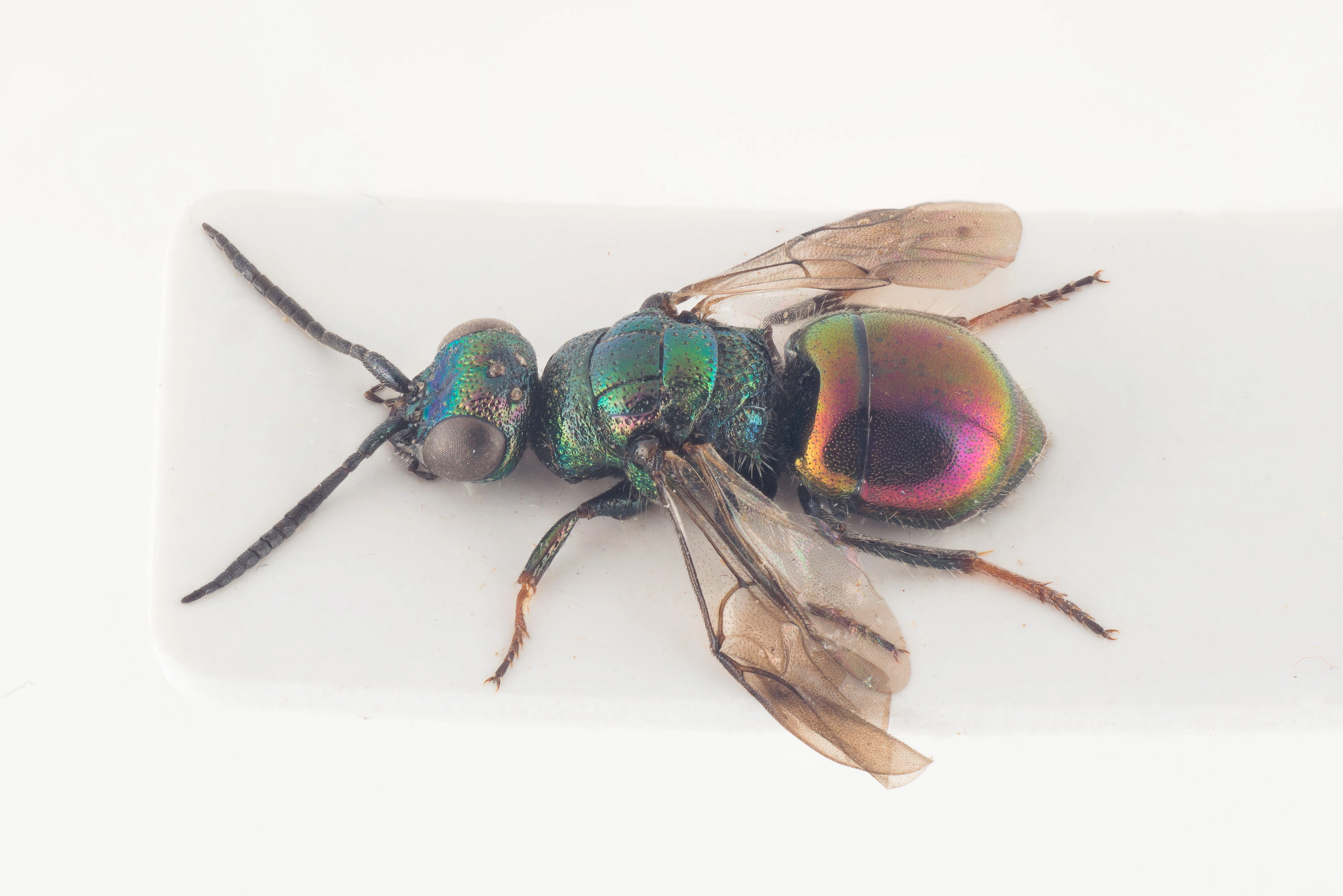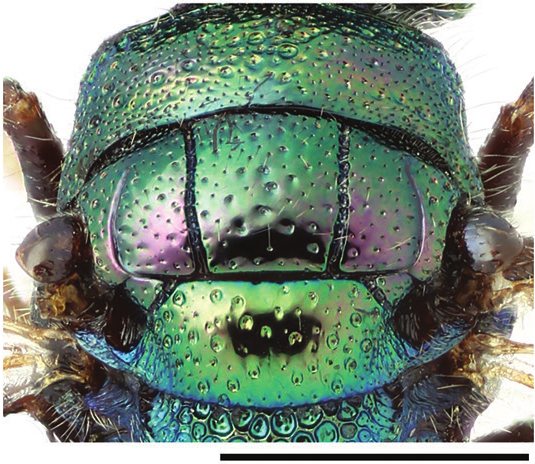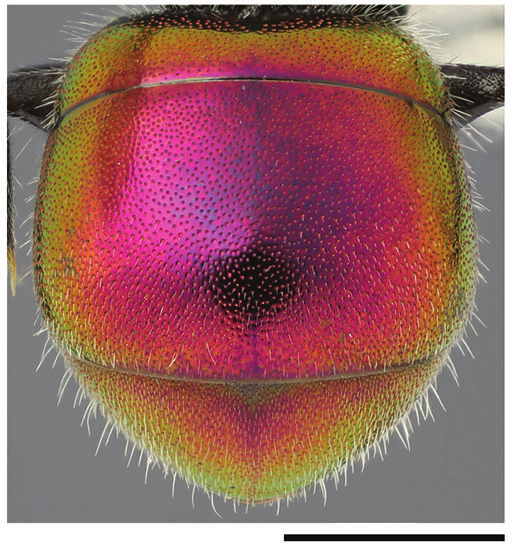Hedychridium cupreum
A relatively common species found in different kind of sandy areas. The most frequent host is the Crabronidae Dryudella pinguis. The species can be identified by the type of punctation of mesosoma and the colour.
- Innhold
- Diagnosis
- Distribution
- Biology
Diagnosis
Figure 69
Pronotum, mesoscutum and mesoscutellum, dorsal view: H. cupreum ♀. Scale 1 mm.
Figure 71
Metasoma, dorsal view: H. cupreum ♀. Scale 1 mm.
Length 4–5 mm.
The species differs from other species of the genus by having very sparse punctation and smooth interstices between punctures on the mesoscutum and mesoscutellum (Fig. 69). The head and mesosoma are dorsally mainly coppery red or greenish (Fig. 69), whereas the metasoma is dorsally red-purple with blue-green reflections. The frons, anterior corners of pronotum, metanotum, propodeum, mesopleuron and tibiae are mainly green or blue. Compared to H. purpurascens, the metasomal pubescence is longer (Fig. 71) and the scapal basin has broader crossridging. S2 does not have a clearly delimited metallic spot medially.
Distribution
Denmark, Estonia, Finland, Latvia, Lithuania, Norway, Sweden. Relatively common.
Trans-Palearctic: from western Europe to Japan, Mongolia and China (Linsenmaier 1959, Kurzenko and Lelej 2007, Rosa et al. 2014).
Be aware that the records present in the GBIF map may be misleading for some countries due to unrevised data sets or missing information.
GBIF Taxon: Hedychridium cupreum (Dahlbom, 1845)Biology
Habitat: sparsely vegetated sandy areas. Adults occasionally visit flowers of Asteraceae and Caryophyllaceae (our own obs.).
Flight period: from early June to late August.
Host: primarily Dryudella pinguis (Dahlbom) (Else 1973, Schmid-Egger et al. 1995, Saure et al. 1998), but possibly also D. stigma (Panzer), Harpactus lunatus (Dahlbom) and H. tumidus (Panzer) (Crabronidae) (Trautmann and Trautmann 1919, Lefeber 1976, Jacobs and Kornmilch 2007).


